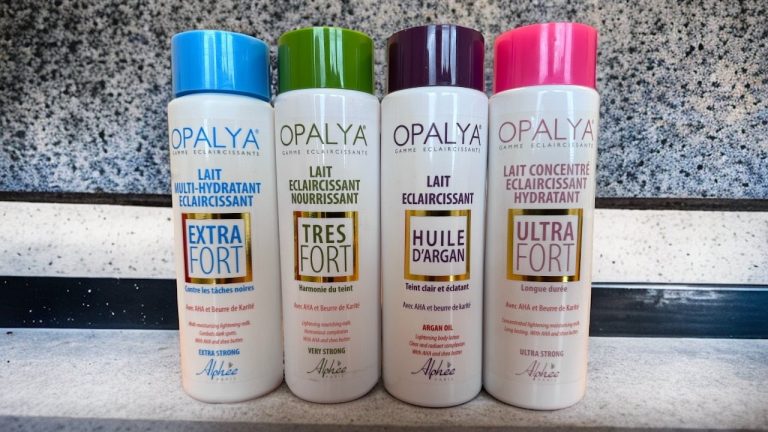What is Hydroquinone and Why Does Opalya Avoid It?

Hydroquinone is an organic compound that appears as a white crystal. Chemically, it is a type of phenol, which is known for its antiseptic and oxidizing properties. Historically, hydroquinone has been utilized in various industrial applications, including photographic development, rubber production, and some paint manufacturing processes.
In cosmetics, hydroquinone has gained popularity as an active ingredient in skin-lightening products. Its primary function is to inhibit a key enzyme in melanin production known as tyrosinase. Melanin is the pigment responsible for skin color. By reducing melanin production, hydroquinone can lighten hyperpigmented areas of the skin, such as brown spots, age spots, and acne scars.
How Hydroquinone Works on the Skin?
When applied topically, hydroquinone penetrates the upper layers of the skin and inhibits tyrosinase. This process does not bleach the skin but normalizes excessive melanin production, leading to reduced hyperpigmentation. It is important to note that the effects of hydroquinone are gradual, requiring regular use over several weeks to see noticeable results.
Popularity of Hydroquinone in Lightening Products
The popularity of hydroquinone in lightening products is due to its proven effectiveness in treating pigment disorders. It is often regarded as the “gold standard” in hyperpigmentation treatments because of its rapid and visible results. Many dermatologists prescribe products containing hydroquinone to address brown spots and other forms of hyperpigmentation.
Despite its effectiveness, its use is controversial due to safety concerns, especially with prolonged use. These concerns have led to restrictions in some countries and increased demand for safer alternatives in skin lightening products.
Risks and Side Effects
While hydroquinone is effective, its use is not without risks. The most common side effects include skin irritation, redness, and peeling. These symptoms are generally mild and diminish over time. However, more serious concerns have emerged regarding the long-term use of hydroquinone. These risks have been highlighted by United Nations measures on skin bleaching issues.
One of the most serious risks associated with hydroquinone is exogenous ochronosis, a rare but severe condition that causes irreversible darkening of the skin, observed in users who applied it for extended periods. Additionally, there are concerns about the potential carcinogenicity of hydroquinone, although research remains inconclusive.
Due to these risks, hydroquinone has been banned or strictly regulated in several countries, emphasizing the importance of considering long-term safety when selecting skincare products.
Opalya’s Approach: Why Avoid Hydroquinone
Opalya’s Philosophy and Commitment to Safety
Opalya, recognizing the concerns surrounding hydroquinone, has chosen to develop lightening milks without this ingredient. This decision is part of a broader commitment to skin health and wellness, prioritizing consumer safety. Opalya aims to provide effective products while ensuring their long-term safety and benefits through the use of fruit acids.
Natural and Safe Alternatives
Instead of hydroquinone, Opalya incorporates a range of safe ingredients in its lightening products. These consist of plant extracts, fruit acids, vitamins, and antioxidants known for their ability to safely reduce hyperpigmentation.
Conclusion
In summary, while hydroquinone continues to be a favored ingredient in lightening products due to its rapid and visible effects, the potential risks connected to its use cannot be disregarded. By avoiding hydroquinone and focusing on safe alternatives, Opalya provides a reassuring option for those seeking to treat hyperpigmentation without compromising skin health.






